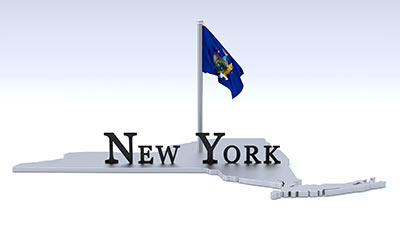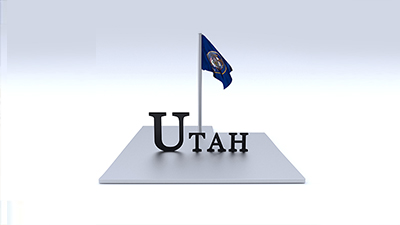Pediatrics CME
31 - 39 of 39 results
-
USE CODE CMELIST10 FOR 10% OFF THIS CME
CBD in Clinical Care – TheAnswerPage
CBD in Clinical Care provides information that will assist clinicians in effectively treating and counseling cannabidiol (CBD) consumers. The physiological effects of CBD, CBD drug interactions, CBD’s side effects, and the conditions for which CBD has been shown by evidence-based clinical studies to be efficacious are all discussed in this course.
See full details chevron_right- Cost: $80
- Credit hours: 2
- CME credits awarded by: ACCME – AMA PRA Category 1 Credits™, ACPE, AANP, ANCC, APA, AGD PACE
- Format: On-Demand Online
- Material last updated: 05/21/2024
- Expiration of CME credit: 05/21/2025
-
USE CODE CMELIST10 FOR 10% OFF THIS CME
New York Medical Cannabis Program Required Course Bundle – TheAnswerPage
The New York Medical Cannabis Program Required Course Bundle has been approved by the New York State Office of Cannabis Management and satisfies the New York educational requirements to become a practitioner with the New York Medical Cannabis Program.
This bundle introduces the reader to the endocannabinoid system and its interaction with the components of the cannabis plant, and addresses various aspects of medical marijuana, including administration, therapeutic use, drug metabolism, physiologic and cognitive effects, potential risks, and drug interactions.
The use of marijuana in obstetric patients, pediatric patients, adolescent patients and elderly patients is discussed in detail. Important considerations for patients with ischemic heart disease, hepatic disease, psychotic illness, and those with a history of drug dependence are provided.
The New York State Medical Cannabis Program Rules and Regulations are outlined in a state-specific course, as well.
See full details chevron_right- Cost: $165
- Credit hours: 3
- CME credits awarded by: ACCME – AMA PRA Category 1 Credits™, ACPE, AANP, ANCC, APA, AGD PACE
- Format: On-Demand Online
- Material last updated: 05/21/2024
- Expiration of CME credit: 05/21/2025
-
USE CODE CMELIST10 FOR 10% OFF THIS CME
Ohio Healthcare Provider Medical Marijuana Course Bundle for Certification (or maintenance of the CTR) – TheAnswerPage
The Ohio Healthcare Provider Medical Marijuana Course Bundle for Certification (or maintenance of the CTR) is certified by the Ohio State Medical Association and satisfies the CME requirements for the initial Ohio Certificate to Recommend (CTR) application or for maintenance of the CTR.
This bundle introduces the reader to the endocannabinoid system and its interaction with the components of the cannabis plant, and addresses various aspects of medical marijuana, including administration, therapeutic use, drug metabolism, physiologic and cognitive effects, potential risks, and drug interactions.
The use of marijuana in obstetric patients, pediatric patients, adolescent patients and elderly patients is discussed in detail. Important considerations for patients with ischemic heart disease, hepatic disease, psychotic illness, and those with a history of drug dependence are provided.
The Ohio Medical Marijuana Control Program rules and regulations are outlined in a state-specific course, as well.
See full details chevron_right- Cost: $165
- Credit hours: 3
- CME credits awarded by: ACCME – AMA PRA Category 1 Credits™, ACPE, AANP, ANCC, APA, AGD PACE
- Format: On-Demand Online
- Material last updated: 05/21/2024
- Expiration of CME credit: 05/21/2025
-
USE CODE CMELIST10 FOR 10% OFF THIS CME
Pennsylvania Medical Marijuana Program Required Course Bundle – TheAnswerPage
The Pennsylvania Medical Marijuana Program Required Course Bundle has been approved by the Pennsylvania Department of Health and satisfies the Pennsylvania educational requirements to become a practitioner with the Pennsylvania Medical Marijuana Program.
This bundle introduces the reader to the endocannabinoid system and its interaction with the components of the cannabis plant, and addresses various aspects of medical marijuana, including administration, therapeutic use, drug metabolism, physiologic and cognitive effects, potential risks, and drug interactions.
The use of marijuana in obstetric patients, pediatric patients, adolescent patients and elderly patients is discussed in detail. Important considerations for patients with ischemic heart disease, hepatic disease, psychotic illness, and those with a history of drug dependence are provided.
This course bundle also addresses the use of cannabidiol (CBD) in clinical care, and the information will assist clinicians in effectively treating and counseling CBD consumers. The physiological effects of CBD, CBD drug interactions, CBD’s side effects, and the conditions for which CBD has been shown by evidence-based clinical studies to be efficacious are all discussed in this course bundle.
The Pennsylvania Medical Marijuana Program rules and regulations are outlined in a state-specific course, as well.
See full details chevron_right- Cost: $189
- Credit hours: 5
- CME credits awarded by: ACCME – AMA PRA Category 1 Credits™, ACPE, AANP, ANCC, APA, AGD PACE
- Format: On-Demand Online
- Material last updated: 5/21/24
- Expiration of CME credit: 5/21/25
-
USE CODE CMELIST10 FOR 10% OFF THIS CME
Utah Medical Cannabis Program Required Course Bundle – TheAnswerPage
The Utah Medical Cannabis Program Required Course Bundle has been approved by the Utah Department of Health and satisfies the Utah educational requirements to become a practitioner with the Utah Medical Cannabis Program.
The Utah Medical Cannabis Program Required Course Bundle introduces the reader to the endocannabinoid system and its interaction with the components of the cannabis plant, and addresses administration, therapeutic use, drug metabolism, physiologic and cognitive effects, potential risks, and drug interactions.
The use of marijuana in obstetric patients, pediatric patients, adolescent patients and elderly patients is discussed in detail. Important considerations for patients with ischemic heart disease, hepatic disease, psychotic illness, and those with a history of drug dependence are provided.
This course bundle also provides information that assists clinicians in effectively treating and counseling CBD consumers.
See full details chevron_right- Cost: $150
- Credit hours: 5
- CME credits awarded by: ACCME – AMA PRA Category 1 Credits™, ACPE, AANP, ANCC, APA, AGD PACE
- Format: On-Demand Online
- Material last updated: 05/21/2024
- Expiration of CME credit: 05/21/2025
-
USE CODE CMELIST10 FOR 10% OFF THIS CME
West Virginia Medical Cannabis Program Required Course Bundle – TheAnswerPage
The West Virginia Medical Cannabis Program Required Course Bundle has been approved by the West Virginia Department of Health and Human Resources, Bureau for Public Health, Office of Medical Cannabis and satisfies the West Virginia educational requirements to become a practitioner with the West Virginia Medical Cannabis Program.
This course introduces the reader to the endocannabinoid system and its interaction with the components of the cannabis plant, and addresses administration, therapeutic use, drug metabolism, physiologic and cognitive effects, potential risks, and drug interactions.
The use of marijuana in obstetric patients, pediatric patients, adolescent patients and elderly patients is discussed in detail. Important considerations for patients with ischemic heart disease, hepatic disease, psychotic illness, and those with a history of drug dependence are provided.
This course bundle also addresses the use of cannabidiol (CBD) in clinical care, and the information will assist clinicians in effectively treating and counseling CBD consumers. The physiological effects of CBD, CBD drug interactions, CBD’s side effects, and the conditions for which CBD has been shown by evidence-based clinical studies to be efficacious are all discussed in this course bundle.
The West Virginia medical cannabis program rules and regulations are outlined in a state-specific course, as well.
See full details chevron_right- Cost: $189
- Credit hours: 5
- CME credits awarded by: ACCME – AMA PRA Category 1 Credits™, ACPE, AANP, ANCC, APA, AGD PACE
- Format: On-Demand Online
- Expiration of CME credit: 5/21/25
-
UNAVAILABLE
ScientiaCME Updates in the medical management of neonatal respiratory distress syndrome (NRDS): best practice and emerging therapies
Activity Description / Statement of Need:
In this online, self-learning activity:
Neonatal respiratory distress syndrome (RDS) occurs in an estimated five to seven percent of term births and up to 90% of preterm births. The risk for neonatal RDS decreases with increasing gestational age, such that at a gestational age of 37 weeks, the risk has fallen to just three times that of a full-term infant. In addition to premature birth, risk factors for neonatal RDS include maternal gestational diabetes, male sex, multiparity, abnormal fetoplacental circulation, fetal distress, Cesarean delivery, and low birth weight. The ability for the clinician to recognize neonatal RDS is a documented practice gap, and failure to do so is associated with mortality and complications that may include respiratory failure in the short-term and chronic lung disease in the long-term.
Target Audience:
The following healthcare professionals: neonatologists; physician assistants, nurse practitioners, nurses, and pharmacists who practice in neonatology; and any other healthcare professionals with an interest in or who clinically encounter patients with neonatal RDS.
In this online, self-learning activity:
Neonatal respiratory distress syndrome (RDS) occurs in an estimated five to seven percent of term births and up to 90% of preterm births. The risk for neonatal RDS decreases with increasing gestational age, such that at a gestational age of 37 weeks, the risk has fallen to just three times that of a full-term infant. In addition to premature birth, risk factors for neonatal RDS include maternal gestational diabetes, male sex, multiparity, abnormal fetoplacental circulation, fetal distress, Cesarean delivery, and low birth weight. The ability for the clinician to recognize neonatal RDS is a documented practice gap, and failure to do so is associated with mortality and complications that may include respiratory failure in the short-term and chronic lung disease in the long-term.
Target Audience:
The following healthcare professionals: neonatologists; physician assistants, nurse practitioners, nurses, and pharmacists who practice in neonatology; and any other healthcare professionals with an interest in or who clinically encounter patients with neonatal RDS.
See full details chevron_right- Credit hours: 1
- CME credits awarded by: ScientiaCME
- Format: On-Demand Online
- Expiration of CME credit: April 26, 2025
-
UNAVAILABLE
ScientiaCME Hardening the stand against fibrodysplasia ossificans progressive (FOP): improving recognition and approaches to patient care
Activity Description / Statement of Need:
In this online, self-learning activity:
Fibrodysplasia ossificans progressiva (FOP) is an ultra-rare genetic connective tissue disorder characterized by dysregulated chondrogenesis, with heterotopic ossification (HO) being the most typical feature. The global prevalence of FOP is estimated at 1.43 per million individuals, with a U.S. prevalence of 0.88 per million. FOP develops due to a mutation in the ACVR1 gene encoding the active receptor-like kinase (ALK2), with unique presenting symptoms including great toe malformations and the development of swelling in several areas of the body within the first decade of life.
Target Audience:
HCPs including: pediatricians, pediatric orthopedic surgeons, endocrinologists, and medical geneticists; nurse practitioners, physician assistants, and pharmacists who practice in orthopedics, orthopedic surgery, and rheumatology; and any other healthcare professionals with an interest in or who clinically encounter patients with FOP.
See full details chevron_right- Credit hours: 1.25
- CME credits awarded by: ScientiaCME
- Format: On-Demand Online
- Expiration of CME credit: April 14, 2025
-
UNAVAILABLE
ScientiaCME Addressing unmet needs and appreciating the place of vaccination in the prevention of human papillomavirus (HPV) infection
Activity Description / Statement of Need:
In this online, self-learning activity:
The term human papillomavirus encompasses a family of DNA viruses that are sexually transmittable and may cause either benign or malignant lesions. They are the leading cause of cervical cancer (CC), with approximately 90% of CC cases attributable to HPV, as well as a major contributor to anogenital and head and neck cancers, although many patients infected with HPV will never develop any related symptoms or disease. The prevalence of HPV in the U.S. is 42.5 million people, and direct medical costs attributed to it are $775 million. HPV 16 accounts for a majority or plurality of HPV-related cancers of both genital tract and head and neck.
The CDC’s Advisory Committee on Immunization Practices (ACIP) recommends HPV vaccination beginning as early as age nine for both sexes, with the schedule and number of doses dependent on age of first dose.
Target Audience:
The following HCPs: Primary care physicians and pediatricians; physician assistants, nurse practitioners, and pharmacists who practice in the aforementioned areas of specialty; and any other HCPs with an interest in or who clinically encounter patients who would benefit from HPV vaccination.
See full details chevron_right- Credit hours: 1
- CME credits awarded by: ScientiaCME
- Expiration of CME credit: 12/21/2024







